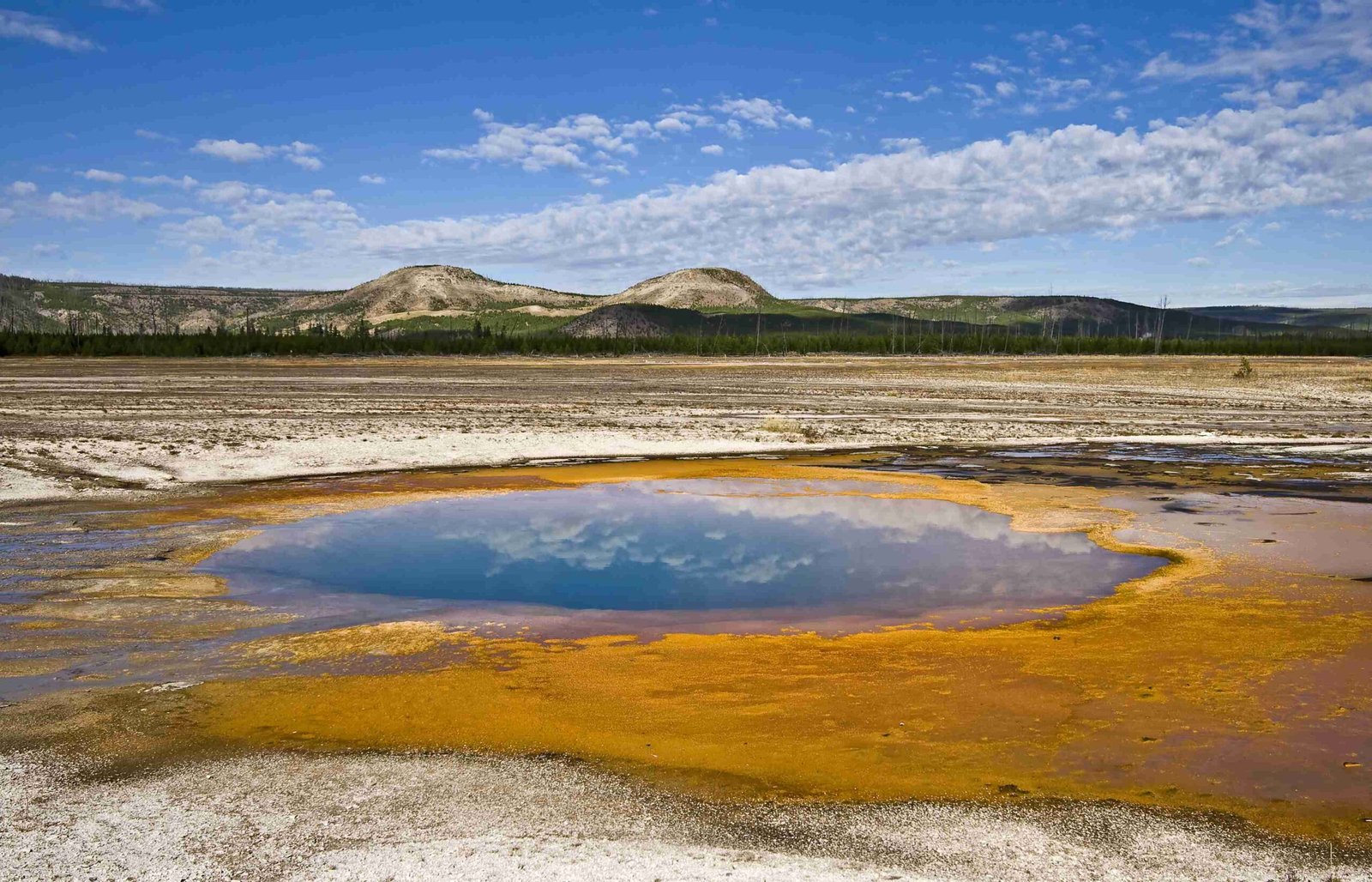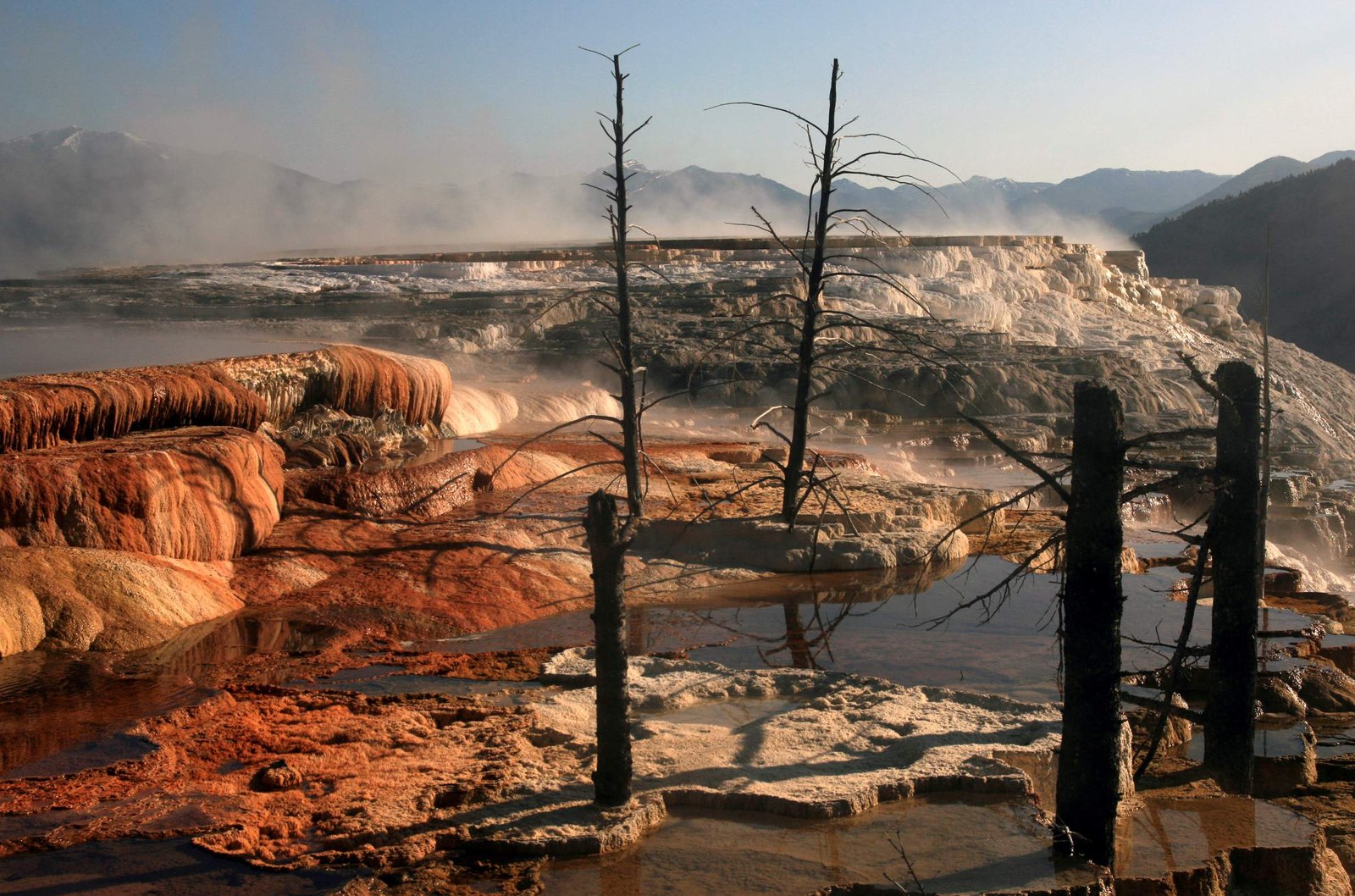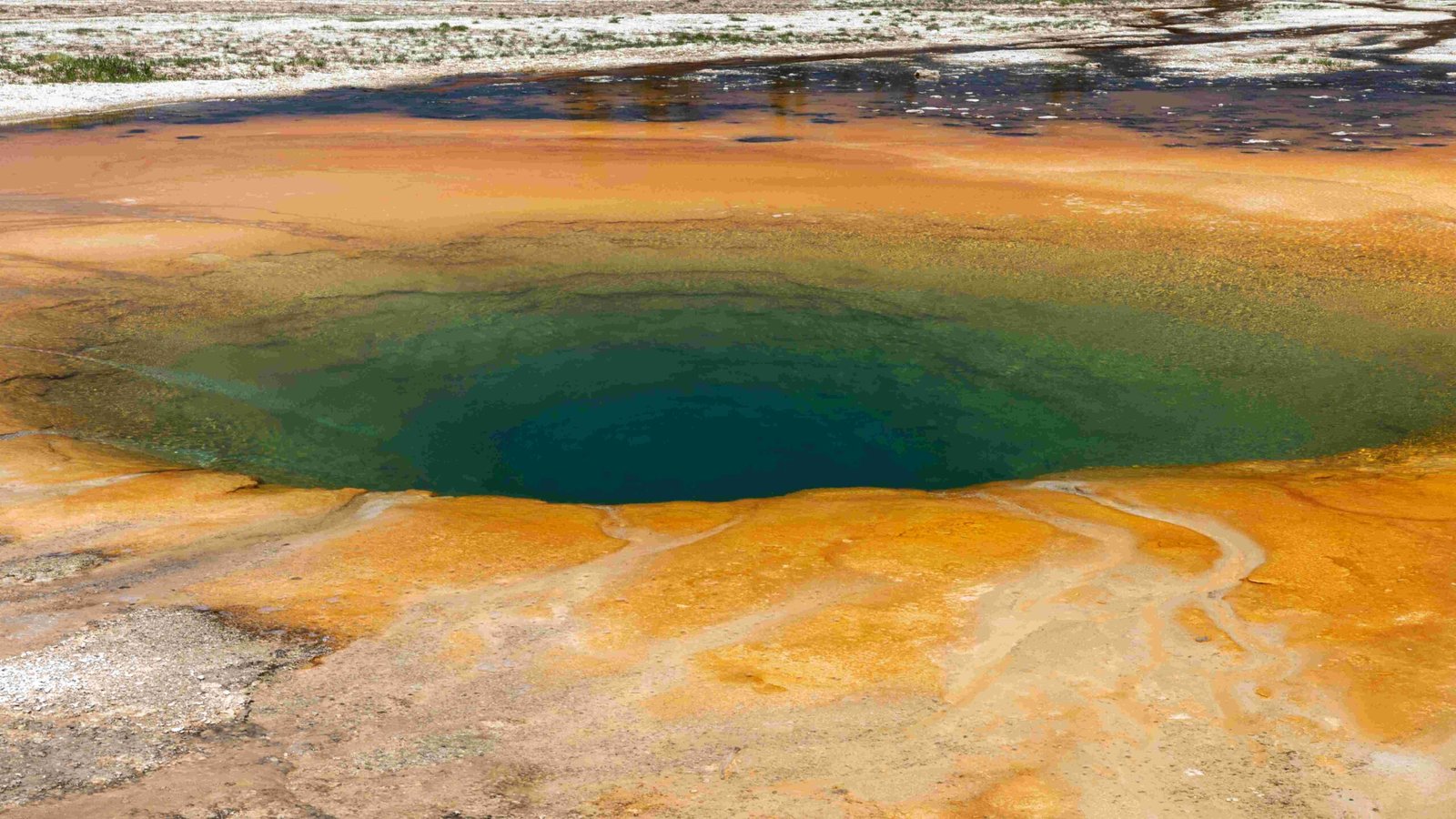The hot springs in Norris Geyser Basin, Yellowstone National Park, USA, are among the most extreme geothermal features on Earth. Known for their scorching temperatures, acidic waters, and diverse array of geysers, fumaroles, and mudpots, these hot springs offer a unique glimpse into the park’s volcanic underbelly. Norris Geyser Basin is divided into two main areas: the barren Porcelain Basin and the wooded Back Basin, both showcasing an impressive range of hydrothermal wonders.
What Makes Norris Geyser Basin’s Hot Springs Unique?

Norris Geyser Basin stands out for several reasons:
- Extreme Temperatures: The basin boasts the highest recorded geothermal temperatures in Yellowstone.
- Acidic Waters: Many features, including some geysers, have highly acidic waters.
- Diverse Features: From the world’s tallest active geyser to colorful hot springs and bubbling mudpots.
- Dynamic Nature: The basin undergoes periodic ‘disturbances’ that can alter the behavior of its features.
What Are the Temperature Ranges of Hot Springs in Norris Geyser Basin?

The hot springs in Norris Geyser Basin are known for their extreme temperatures:
- Highest Recorded: 459°F (237°C) at 1,087 feet (326 meters) depth
- Surface Features: Most above 199°F (93°C), the local boiling point
- Fumaroles: Up to 280°F (138°C)
- Geyser Eruptions: Average around 204°F (95.5°C) at the vent
These temperatures remain relatively constant year-round due to their geothermal source.
What Types of Geothermal Features Can Visitors Expect?
Norris Geyser Basin offers a diverse array of geothermal features:
- Geysers
- Steamboat Geyser: World’s tallest active geyser (300-400 feet / 91-122 meters)
-
Echinus Geyser: Known for acidic eruptions (pH ~3.5)
-
Hot Springs
- Cistern Spring: Connected to Steamboat Geyser
-
Various colorful pools throughout the basin
-
Mudpots
- Found in areas like Artists Paintpots
-
Bubbling, colorful mud features
-
Fumaroles
- Steam vents with temperatures up to 280°F (138°C)
-
Characterized by hissing sounds and lack of water overflow
-
Acid Geysers
- Rare features with highly acidic waters
- Echinus Geyser is a prime example
When Is the Best Time to Visit Norris Geyser Basin?
The optimal visiting time depends on several factors:
- Summer (June-August): Peak season with mild weather and full accessibility
- Spring/Fall (May, September-October): Fewer crowds, but potential for unpredictable weather
- Winter (November-April): Limited access due to snow, but unique scenery
Consider the following when planning your visit:
| Season | Pros | Cons |
|---|---|---|
| Summer | Warm weather, all facilities open | Crowded, peak prices |
| Spring/Fall | Fewer visitors, mild weather | Some facilities may be closed |
| Winter | Unique snow-covered landscapes | Limited access, cold temperatures |
What Amenities and Facilities Are Available for Visitors?
Norris Geyser Basin offers several amenities for visitors:
- Parking: Designated lots for Porcelain Basin and Back Basin trails
- Accessibility: Boardwalks and trails provide safe access to features
- Education:
- Norris Geyser Basin Museum
- Museum of the National Park Ranger
- Ranger-led programs (seasonal)
- Self-guided interpretive trails
- Camping: Norris Campground nearby for overnight stays
How Can Visitors Stay Safe While Exploring the Hot Springs?
Safety is paramount when visiting Norris Geyser Basin:
- Stay on designated boardwalks and trails at all times
- Keep children close and pets leashed
- Do not touch or approach any thermal features
- Carry and drink plenty of water to avoid dehydration
- Be aware of sudden weather changes and dress in layers
- Follow all park regulations and ranger instructions
What Unique Phenomena Occur in Norris Geyser Basin?
Norris Geyser Basin is known for its dynamic nature:
- Thermal Disturbances: Periodic events that can change feature behavior
- Colorful Bacterial Mats: Thermophiles create vibrant hues in and around hot springs
- Geyser Interactions: Underground connections between features (e.g., Steamboat and Cistern Spring)
- Constant Change: New features can appear while others go dormant
How Does Norris Geyser Basin Compare to Other Yellowstone Thermal Areas?
Norris Geyser Basin stands out in several ways:
- Highest Temperatures: Hotter than other Yellowstone thermal areas
- Most Acidic: Features some of the park’s most acidic waters
- Diverse Features: Wide range of geothermal phenomena in a compact area
- Dynamic Nature: More prone to sudden changes than other basins
- Unique Ecology: Specialized thermophiles adapted to extreme conditions
What Should Photographers Know About Capturing Norris Geyser Basin?
For photographers visiting Norris Geyser Basin:
- Best Light: Early morning or late afternoon for softer light
- Gear: Wide-angle lenses for landscape shots, telephoto for details
- Challenges: Steam and mist can obscure views; protect equipment from thermal gases
- Unique Shots:
- Colorful bacterial mats in Porcelain Basin
- Steamboat Geyser eruptions (unpredictable)
- Reflections in still pools
- Time-lapse: Capture the dynamic nature of geysers and hot springs
How Has Norris Geyser Basin Changed Over Time?
Norris Geyser Basin is in constant flux:
- Historical Changes:
- New features have appeared while others have gone dormant
-
Major disturbances have altered the basin’s layout
-
Recent Observations:
- Increased activity of Steamboat Geyser since 2018
-
Ongoing research into the basin’s dynamic nature
-
Future Predictions:
- Continued changes expected due to underlying volcanic activity
- Potential for new features to emerge or existing ones to alter behavior
Visiting the hot springs in Norris Geyser Basin, Yellowstone National Park, USA, offers a unique opportunity to witness the raw power of Earth’s geothermal forces. With its extreme temperatures, diverse features, and dynamic nature, this area provides an unparalleled experience for those interested in geology, ecology, and natural wonders.
References:
1. https://www.nps.gov/yell/planyourvisit/norrisplan.htm
2. https://travel-gourmand.com/2017/10/14/yellowstone-national-park-norris-geyser-basin/
3. https://en.wikipedia.org/wiki/Geothermal_areas_of_Yellowstone

